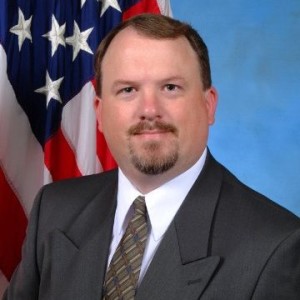

John Hale, DISA’s chief of cloud services, said the analysis is helping DISA prepare its MilCloud 2.0 for more business.
Best listening experience is on Chrome, Firefox or Safari. Subscribe to Federal Drive’s daily audio interviews on Apple Podcasts or PodcastOne.
As part of the Defense Department’s consolidation of the organizations known as the fourth estate, the Defense Information System Agency and the DoD chief information officer’s office conducted a survey of sorts for the cloud.
They looked at all the existing applications to decide what stays, what goes and where the apps need to live going forward.

John Hale, the chief of cloud services at the Defense Information Systems Agency, said the application rationalization analysis is laying the path forward for this fourth estate consolidation initiative.
“We looked at the individual applications, what they were hosted on, what environments there were, how many servers, storage and interactions with other systems, and out of that we put it through a series of software analysis tools and out of that came a set of recommendations that the DoD CIO’s office published in an internal report,” said Hale in an interview after speaking at the FCW Cloud Summit on April 9 in Washington. “It basically states for every single fourth estate organization, each individual application, what the right disposition for those applications are. There were four major buckets: it should go to MilCloud 2.0; it should go to off-premise commercial cloud; it should go to traditional hosting; or it should stay where it is.”
Hale said the research didn’t provide any real surprises about the applications and where they should live in the future. What the analysis did show, however, was the amount of duplicative work that the 28 agencies that make up the fourth estate are doing.
Hale said the chief management officer is looking at the report to see how the fourth estate can further reduce the number of applications they support.
“When we started doing the effort, it was not one of the core tenets of why we were doing this activity. But when we started getting the reports back and reporting back to the senior leadership about what was going on, that is when it started to come to the forefront that there was this opportunity that we hadn’t thought about beforehand,” he said. “The CMO will come back with a set of recommendations about what we standardize across from an enterprise perspective.”


“The number that were slated to stay in place were actually pretty small and they were very specific mission purpose applications,” Hale said. “Based on that data, we can size our environments to fit the demand signal, and likewise as we do future acquisition, we know what the size of the acquisitions need to be to fit all of our requirements.”
In addition to the fourth estate effort, DISA is upgrading its MilCloud 2.0 offering to include a secret environment.
Hale said mission partners will be able to use the secret environment starting in August.
“The real benefit there is the mission partner will have the same environment to run their applications at both the unclassified and classified environment. A lot of mission partners have the same type of applications that run at multiple security levels in order to meet specific needs so it gives them the one consistent environment across those,” he said. “We are still working with a lot of commercial cloud providers that will delve into the classified cloud market with us and we are working with guys to connect them up to the classified networks also.”
Copyright © 2024 Federal News Network. All rights reserved. This website is not intended for users located within the European Economic Area.
Jason Miller is executive editor of Federal News Network and directs news coverage on the people, policy and programs of the federal government.
Follow @jmillerWFED
